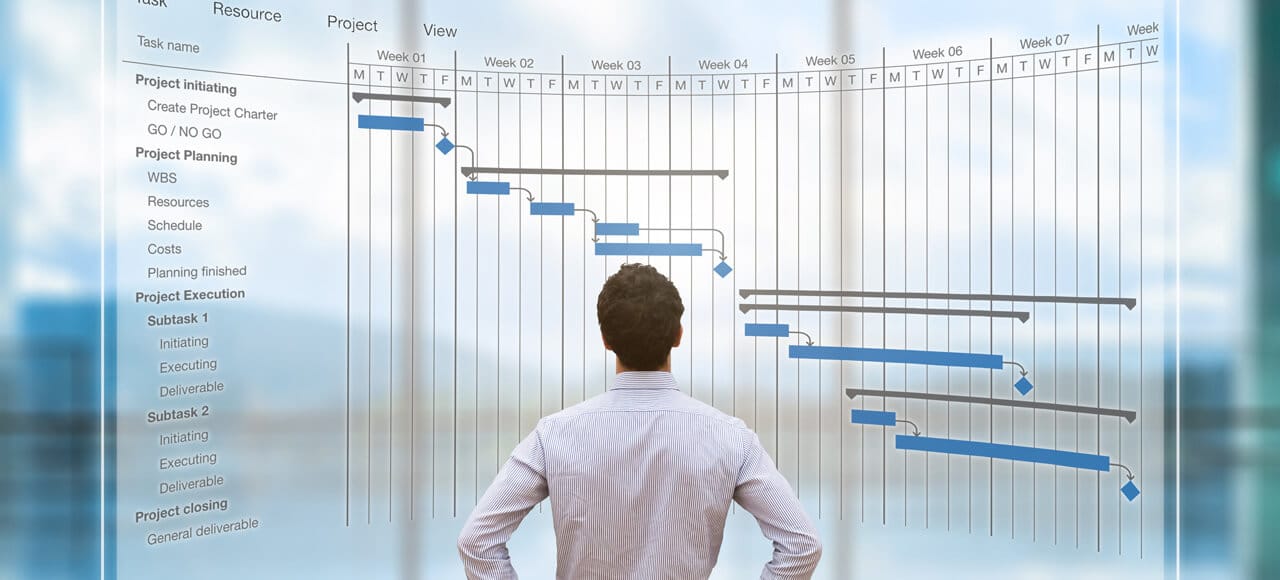Major public sector construction projects show an average cost increase of 44 percent, according to a study conducted by the Hertie School of Governance in Berlin in 2015. Delays and cost increases not only affect the public sector, but can also be found in major construction projects undertaken by private builders.
In order to ensure that, in the future, major construction projects (regardless of whether publicly or privately funded) are built cost-effectively, on schedule and efficiently, the Federal Ministry of Transport and Digital Infrastructure has drawn up the final report of the “Construction of Major Projects Reform Commission”. With a holistic view on projects, it uncovers weak points and makes recommendations aimed at minimising risks. The federal government is not the only one to have dealt with major construction project problems. The Free and Hanseatic City of Hamburg – and the first German state to do so – has published a directive on cost-stable constructions. Although the results and guidelines for action concern public projects, they can be applied to private projects.
The causes of construction delays and cost increases are generally a lack of compliance or specialist knowledge, or conflicts between the parties to the project. These can be found in three phases of construction: preparation, planning and execution.
Good things take time
Delays and cost increases in major construction projects suggest that the preparation and planning stages are already showing structural deficiencies. This means that the builder’s wishes are not sufficiently taken into account in the needs assessment or that the builder does not yet have a fully developed idea. An inaccurate or missing needs assessment leads to plan alterations in the ongoing phases, which then again leads to delays and cost increases. For this reason, the builder should analyse the project requirements as precisely as possible in the preparation phase together with a planning team (e.g. architects, civil engineers as well as cost and risk experts). The resulting requirements are thus determined in detail. The requirements plan should be based on the German “Brief for building design” (Bedarfsplanung im Bauwesen) standard. The German Institute for Standardization provides for three steps:
- methodical assessment of the client’s needs,
- target-oriented processing of the needs and
- transcription into architectural requirements.
There is no doubt that it can take a long time to assess the client’s needs, especially for major construction projects. Experience has shown that the assessment also involves costs, because experts must be paid. However, the bottom line is that these costs are well invested if delays and subsequent costs can be avoided from the outset.
A major construction project is obviously prone to many risks, but risk management is rarely or never used. It is one of the management’s tasks to determine the risk policy and to prevent risks by implementing an appropriate compliance management system. Without risk management, risks cannot be identified or mitigated at an early stage. This often results in the fact that the budget and schedule can no longer be adhered to. The project management should be maintained throughout the entire duration of the project and incorporate all parties.
Risk management should at best be based on the ISO 31000 and DIN EN 31010 standards and pursue the following objectives:
- identification of opportunities and dangers as early as possible and development of countermeasures,
- higher quality of the basis for decision-making through early analysis of project requirements,
- improvement of communication,
- increased legal certainty through early recognition of project risks as well as fair, effective and comprehensible risk distribution in contracts with planners and construction companies.
The findings of risk management must be made available to all parties involved. The implementation of an internal reporting system is advisable. The complex interrelationships between the decision-makers must be made available in an easily readable manner.
In order to ensure that all parties to the project are in the same boat, measures must be taken to promote a partnership-based cooperation. This can be achieved by establishing common objectives and methods of cooperation as well as through a contractual agreement on the assumption of risks.
Plan first, then build
Planning comprises preliminary planning, design planning and execution planning. There is frequently a lack of coordination between architects, specialist planners and contractors, particularly in the case of more complex construction projects. Non-coordinated isolated solutions do not lead to success. The aim must be to achieve seamless, detailed and consistent planning. In order to get there, many decisions have to be made. This is precisely where the problem lies: the decision-maker often has trouble making decisions because the necessary information is not available in sufficient quality and quantity. Since there is no law or directive regulating planning, various methods and information are used.
Modern, digital planning methods such as Building Information Modeling (BIM) are ideal for team-oriented and cooperative planning. The parties to the project can use BIM to create contract specifications and simulate construction site processes. This makes it possible to determine whether planning would be more efficient or whether alternatives would make more sense. Moreover, the use of BIM offers advantages such as:
• cost certainty and adherence to schedules,
• greater transparency and
• optimised communication processes.
To sum up, with BIM, constructions are at first virtual and only afterwards actually built.
Procurement procedures are another factor that contribute to cost increases. Often the bidder chooses the cheapest, but not the most economically advantageous offer. This can lead to quality loss, conflicts and many other challenges. The selection and award criteria must be developed beforehand, and must take into account other selection criteria in addition to the price. Such criteria can be, for example, quality, technical value, aesthetics, practicality as well as operating and follow-up costs (for instance, maintenance costs). The bidder with the most points can then be selected based on the assessed selection and award criteria.
One for all – all for one
Construction sites are often characterised by mistrust and an abrasive tone. As a result, the interfaces between the different building trades are not taken into account and no reconciliations are made. It is precisely the lack of understanding of the different interests involved and of partnership-based cooperation that fosters conflicts and confrontations. Disputes are virtually pre-programmed and delay construction. The development of project culture is advisable. In this way, parties to the project identify as equal partners possessing the same information. To this end, objectives can be included in contracts as a preamble. By signing the respective contracts, the parties involved recognise the various motives, interests and processes and agree to regular communication.
Partnership-based cooperation on the construction site can also be ensured by joint, project-related liability insurance. The parties to the project are thus jointly and severally liable for all potential damages. Therefore, in the event of a damage, it is not important to find a culprit. Rather, there is a common interest in repairing the damage.
In the case of disputes between the parties to the project, it is advisable to contractually agree on an out-of-court dispute settlement. Mediation is an option, which is regulated by the Mediation Act (german Mediationsgesetz). With the assistance of a mediator, the parties attempt to reach an amicable agreement on a voluntary basis. The mediator is an independent and neutral party who merely guides the mediation and mediates between the parties. In this way, expensive and long-standing court proceedings can be avoided and a consensus reached more quickly.
Nevertheless, conflicts arising from project parties are not the only cause for construction delays, during the construction phase, there can also be a lack of needs assessment by the builders. Changes and special requests as well as missing items in the bill of quantities result in the construction being delayed and becoming more expensive, especially as the building traders start running out of time. Additionally, in many cases, installers are then already scheduled for other projects starting after the initial completion date.
Recommendation for practice
In major construction projects, there are many different factors to take into consideration. In addition, major construction projects are always prone to risks that must be identified in advance and kept as small as possible. With the help of various methods, delays and/or additional costs can be detected and minimised at an early stage, e.g. by means of:
- appropriate project management,
- complete, detailed and consistent planning,
- the use of new, digital methods such as BIM, with which planning errors and conflicts can virtually be identified and resolved in advance before the first brick is even laid,
- an open communication policy for all parties involved,
- a partnership-based cooperation and
- an agreement on out-of-court dispute settlements.











